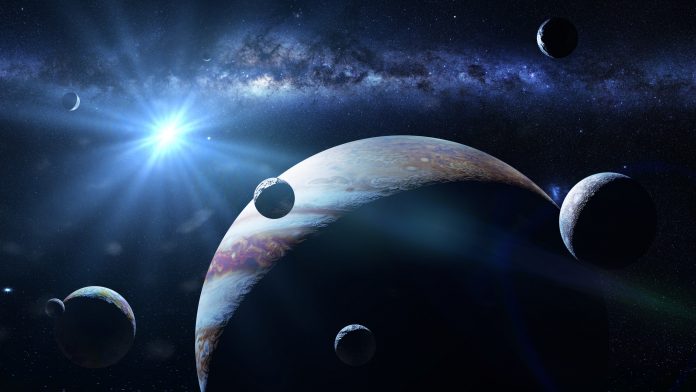Massive stars played a pivotal role in shaping the birth of planetary systems and planetary formation
Using the capabilities of the James Webb Space Telescope (JWST), an international team, including scientists from the University of Cologne, looked into the heart of the Orion Nebula to explore the intricacies of planetary formation like never before.
The d203-506 protoplanetary disc
They focused on a protoplanetary disc named d203-506, a cosmic hotbed with the potential for planetary birth. These protoplanetary discs represent the raw material from which planets emerge, but the team’s observations revealed a influence exerted by nearby massive stars.
Unlike our Sun, a subtle cosmic neighbour, these massive stars are titans, boasting ten times the mass and 100,000 times the luminosity.
Their radiant energy floods the surrounding space with intense ultraviolet radiation, transforming the nascent planetary systems that take shape nearby.
Planetary formation
Depending on the central star’s mass, this radiation can either promote the formation of planets or stifle it entirely by spreading the delicate matter within the protoplanetary disc.
In d203-506, the team’s findings suggest that the intense irradiation from nearby massive stars would prevent the formation of Jupiter-like planets within the system.
The data collected from the JWST and the Atacama Large Millimeter Array (ALMA) provided insights into the physical conditions within the gas surrounding these protoplanetary discs. Through analysis and modelling, the researchers calculated the rate at which the disc loses mass, a critical factor in understanding its fate.
Cosmic creation
The entire disc would evaporate at a rate faster than it would take for a giant planet to form within its confines. Dr. Yoko Okada from the University of Cologne’s Institute of Astrophysics emphasised the collaborative effort behind these findings.
“It is great that so many contributions from the team over the years, including the planning of the observations and the evaluation the data, are bearing fruit in the form of these results that represent a significant step forward in understanding the formation of planetary systems,”
The formation of planets these findings deepen our understanding of star formation and the evolution of the interstellar medium.











